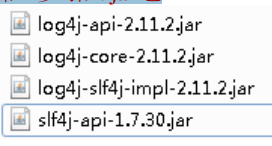肇庆建设银行招聘网站搜狗推广
1、整个 Spring5 框架的代码基于 Java8,运行时兼容 JDK9,许多不建议使用的类和方 法在代码库中删除
日志框架
2、Spring 5.0 框架自带了通用的日志封装
(1)Spring5 已经移除 Log4jConfigListener,官方建议使用 Log4j2
(2)Spring5 框架整合 Log4j2
第一步 引入 jar 包

log4j有安全问题,需要下载2.15版本以上的
第二步 创建 log4j2.xml 配置文件
<?xml version="1.0" encoding="UTF-8"?> <!--日志级别以及优先级排序: OFF > FATAL > ERROR > WARN > INFO > DEBUG > TRACE > ALL --> <!--Configuration 后面的 status 用于设置 log4j2 自身内部的信息输出,可以不设置, 当设置成 trace 时,可以看到 log4j2 内部各种详细输出-->
<configuration status="INFO"> <!--先定义所有的 appender--> <appenders> <!--输出日志信息到控制台--> <console name="Console" target="SYSTEM_OUT"> <!--控制日志输出的格式--> <PatternLayout pattern="%d{yyyy-MM-dd HH:mm:ss.SSS} [%t] %-
5level %logger{36} - %msg%n"/> </console> </appenders> <!--然后定义 logger,只有定义 logger 并引入的 appender,appender 才会生效--> <!--root:用于指定项目的根日志,如果没有单独指定 Logger,则会使用 root 作为 默认的日志输出--> <loggers> <root level="info"> <appender-ref ref="Console"/> </root> </loggers>
</configuration>

@Nullable
(1)@Nullable 注解可以使用在方法上面,属性上面,参数上面,表示方法返回可以为空,属性值可以 为空,参数值可以为空
(2)注解用在方法上面,方法返回值可以为空

(3)注解使用在方法参数里面,方法参数可以为空

(4)注解使用在属性上面,属性值可以为空

函数式风格
//函数式风格创建对象,交给 spring 进行管理
@Test
public void testGenericApplicationContext() { //1 创建 GenericApplicationContext 对象 GenericApplicationContext context = new GenericApplicationContext(); //2 调用 context 的方法对象注册 context.refresh(); context.registerBean("user1",User.class,() -> new User()); //3 获取在 spring 注册的对象 // User user = (User)context.getBean("com.atguigu.spring5.test.User"); User user = (User)context.getBean("user1"); System.out.println(user); }
JUnit5
@ExtendWith(SpringExtension.class)
@ContextConfiguration("classpath:bean1.xml")
public class JTest5 { @Autowired private UserService userService; @Test public void test1() { userService.accountMoney(); }
}
或者
@SpringJUnitConfig(locations = "classpath:bean1.xml")
public class JTest5 { @Autowired private UserService userService; @Test public void test1() { userService.accountMoney(); }
}
